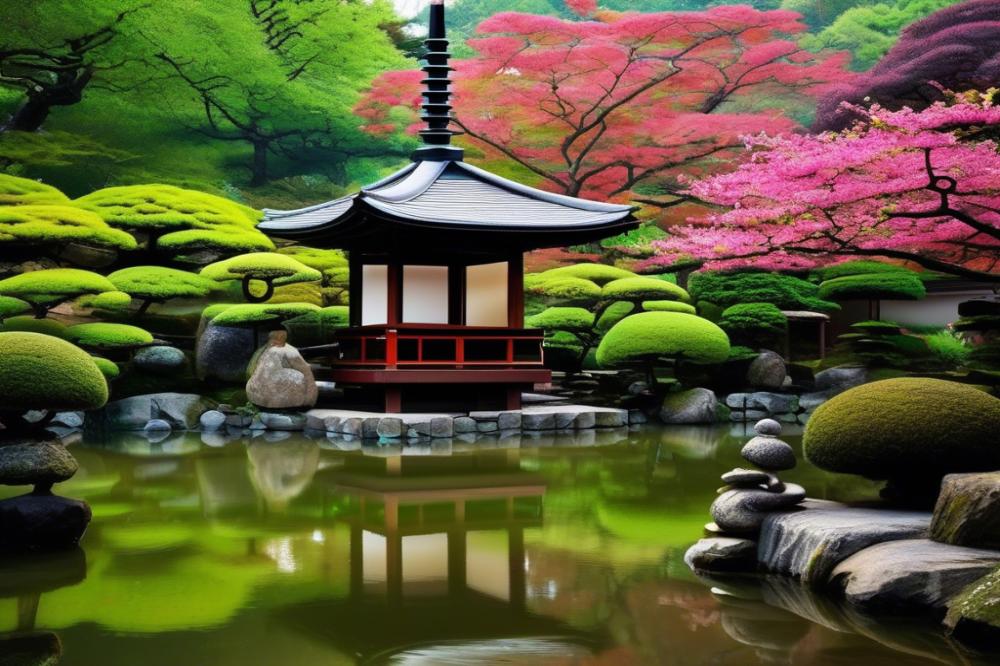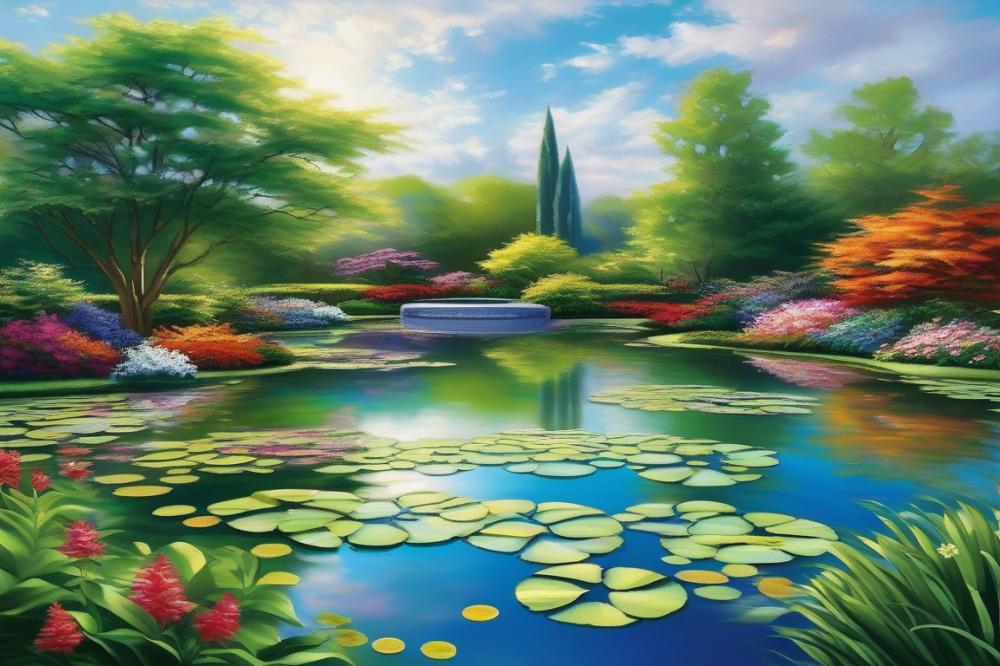Overview of Japanese gardens and pagodas
Japanese gardens have long captivated people with their serene beauty and intricate design. These landscapes offer a peaceful retreat from the hustle and bustle of everyday life. Often characterized by carefully arranged elements, each garden reflects dedication to natural beauty. Features like koi ponds and bonsai trees draw visitors into a world of harmony and reflection.
pagodas are a striking addition to this tranquility. They serve as symbols of cultural significance and architectural elegance. These structures often stand tall, embodying the essence of Asian architecture. When placed in a garden setting, pagodas enhance the feeling of serenity, inviting contemplation.
Garden design holds deep meaning in Japanese culture. Elements such as stone lanterns and zen gardens contribute to a sense of balance. The symbolism of each item creates a narrative woven into the landscape. Incorporating pagodas can elevate this narrative, bringing focus and structure to the overall design. Pagodas are more than just outdoor art; they represent a connection to history and spirituality.
In conclusion, the thoughtful integration of pagodas can enrich any Japanese garden. They breathe life and context into the landscape, symbolizing tranquility and harmony. By carefully considering placement and design, one can create a stunning visual experience. This fusion of architecture and nature captures the essence of what a garden should embody.
Understanding Japanese Gardens
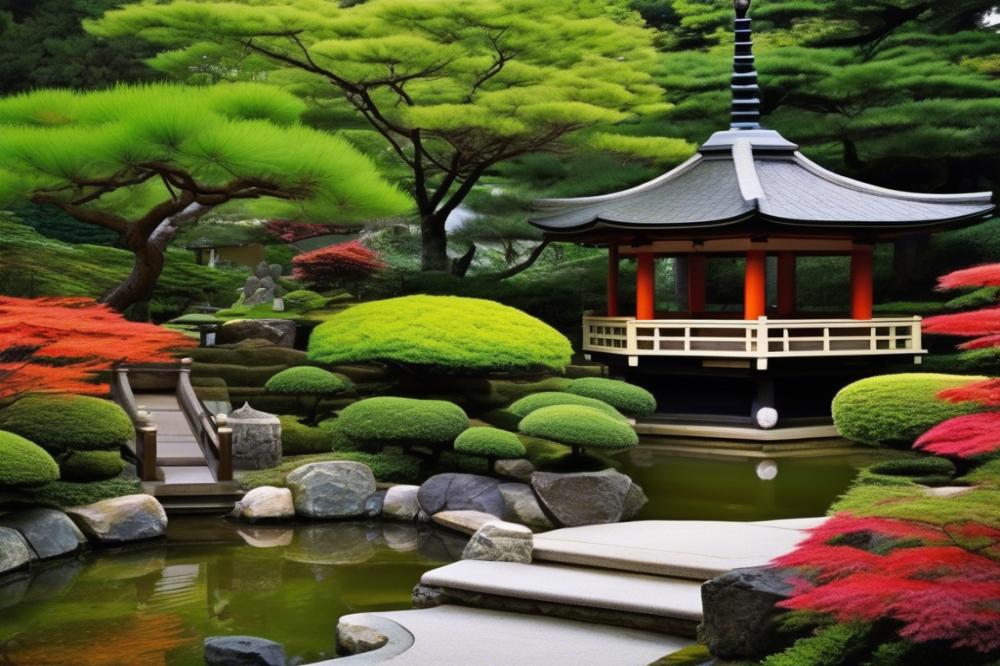

Japanese gardens are a distinctive form of landscaping that embody beauty, simplicity, and deep cultural significance. These gardens prioritize balance and harmony, reflecting the natural world in a way that fosters tranquility. Various types exist, each with unique features and themes that create serene outdoor spaces.
Zen gardens, often known as dry landscapes, focus on minimalism. They typically include raked gravel to represent water and strategically placed stones. This design encourages meditation and contemplation, allowing visitors to experience peace through simplicity.
Koi ponds stand out as another hallmark of Japanese garden design. These water features provide a vibrant ecosystem, often filled with colorful fish. The presence of koi adds life and motion, while surrounding plants bring in lush greenery. Observing koi gliding through the water can be extraordinarily calming.
Bonsai trees are another important aspect of these gardens. They symbolize patience and meticulous care, as each tree is cultivated over many years. These miniature trees add an artistic touch, showcasing the beauty of nature in a compact form.
The use of stone lanterns is common, serving both practical and aesthetic purposes. These lanterns illuminate pathways and highlight focal points in the landscape. Placed among plants or rocks, they become an essential part of the overall design.
Natural elements play a significant role in Asian architecture, often serving as reminders of the changing seasons. Stones, water, and plants intertwine to create a harmonious environment that reflects a deeper connection to nature. Cultural symbolism can be found in each component, from the layout to individual plants.
Incorporating features like winding paths and bridges enhances the sense of journey within the garden. Each turn reveals a new perspective, inviting exploration and contemplation. garden design becomes a method to engage the senses and promote a feeling of well-being.
Overall, the principles of balance, harmony, and simplicity define what makes these landscapes so special. Each detail contributes to a space that encourages relaxation and reflection, aligning perfectly with the ideals of Japanese aesthetics. Outdoor art manifests in various forms, from plant arrangements to hand-crafted sculptures, further enriching the experience.
The Role of Pagodas in Japanese Garden Design
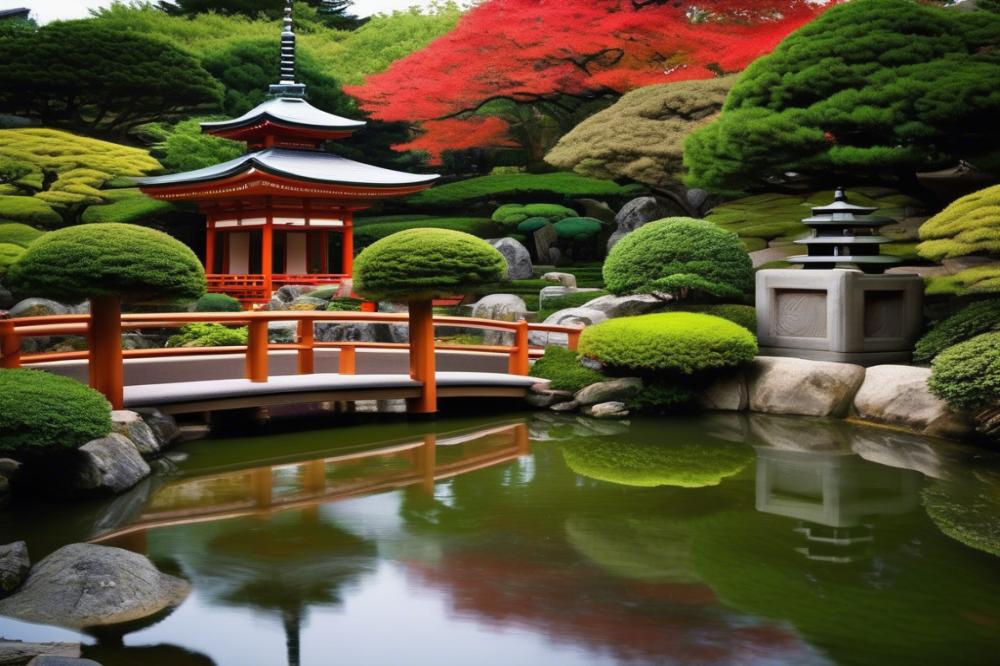

Pagodas hold a special place in Japanese garden design. These distinctive structures are steeped in cultural significance and history. Often found in traditional landscapes, they reflect the deep connection between nature and spirituality. The architectural style of a pagoda consists of multiple tiered roofs, creating a striking silhouette against lush greenery.
Symbolism is another important aspect. Pagodas often represent a bridge between the earth and heaven. These structures evoke feelings of tranquility and contemplation, making them perfect for spaces meant for relaxation. Just as stone lanterns illuminate paths at night, pagodas guide the thoughts of visitors through the garden.
Architects and designers have embraced pagodas for their aesthetic appeal. They serve as focal points in garden design, drawing the eye and inviting exploration. A well-placed pagoda can transform a simple yard into a serene retreat. Placing one near koi ponds enhances both visual beauty and the calm atmosphere. Furthermore, these structures can complement other garden elements, like bonsai trees and zen gardens.
In landscapes, pagodas also promote a sense of harmony. They integrate well with various Asian architecture elements. This integration helps create a cohesive design, where each piece contributes to the overall story. Observing a pagoda can inspire thoughts of balance and peace, enhancing the outdoor art experience of the garden. Their presence helps maintain a connection to tradition while allowing for personal expression.
The incorporation of pagodas into landscaping enriches the viewer’s experience. Visitors often stop to admire their craftsmanship and the skill that went into creating them. Hence, these structures become not just ornamental but also educational. Each pagoda shares a piece of history and culture, adding depth to the garden’s narrative. By understanding their role, one can appreciate how they elevate the ambiance of any garden space.
Techniques for Incorporating Pagodas
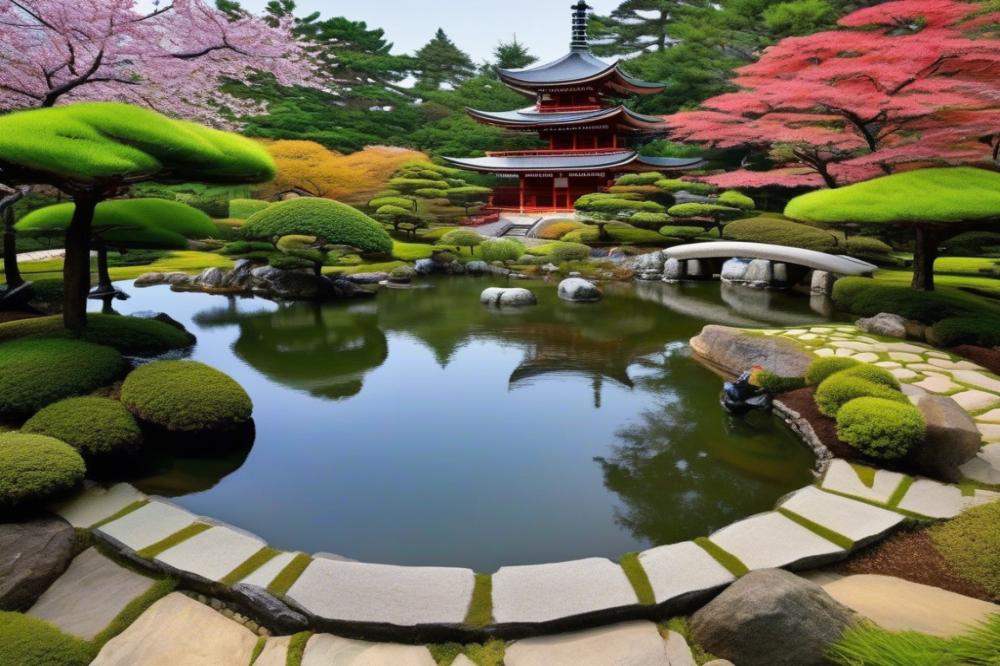

Integrating pagodas into garden landscaping can enhance the overall aesthetic and offer a sense of tranquility. When placing a pagoda, consider its visual harmony with surrounding elements. A balance with features like stone lanterns, koi ponds, and bonsai trees is essential.
Observe the layout of your garden design. For example, position a pagoda near a zen garden for a serene focal point. Place it where it can be appreciated from multiple angles. This strategic placement allows the structure to resonate with the space’s natural flow.
Different styles of pagodas exist, from tiered designs to simpler structures. Each type carries its own cultural symbolism. A three-tiered pagoda represents the past, present, and future. Simple designs, on the other hand, can evoke a sense of modernity within traditional boundaries.
Consider incorporating outdoor art elements alongside your pagoda. Add stone lanterns or a small water feature to create a cohesive look. These enhancements can guide visitors’ eyes and emphasize the pagoda’s significance in the landscape.
Bonsai trees offer an excellent companion for pagodas. Their meticulous design mirrors the care and artistry involved in pagoda construction. Grouping these plants together creates a powerful statement. This combination highlights the patience required in both bonsai cultivation and Asian architecture.
Koi ponds can also enhance the setting. When visible from the pagoda, they invite reflection and serenity. The shimmering water acts as a backdrop, enhancing the pagoda’s beauty. It’s all about creating layers of interest that draw visitors in.
While planning your garden layout, pay attention to pathways leading to the pagoda. Meandering paths can create a sense of discovery, guiding guests through the space. Use natural materials like gravel or stones for these pathways. They add texture and reinforce the natural theme.
Ultimately, thoughtful integration of pagodas in your design creates a tranquil oasis. With careful choices, your garden can become a haven of beauty and peace, enriched by both natural and artistic elements.
Enhancing Tranquility with Pagodas and Other Elements
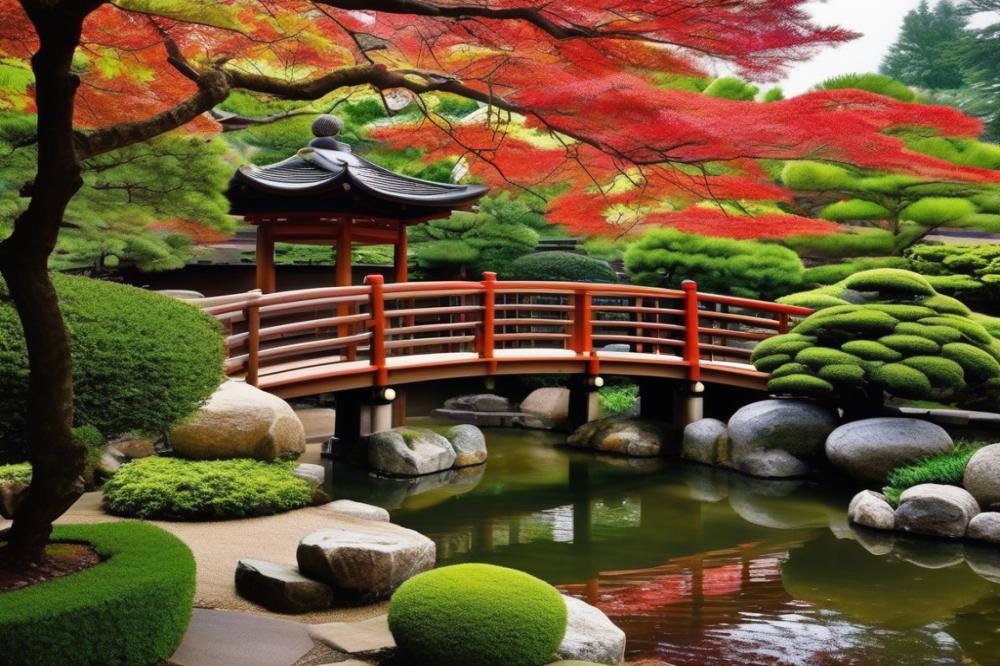

Creating a tranquil atmosphere in your landscaping is essential. Pagodas serve as focal points, drawing the eye and enhancing the peace that many seek in their gardens. When combined with water elements like koi ponds, the calming sounds of flowing water help holistically create serenity. Incorporating these features allows for a harmonious blend that resonates with the senses.
Outdoor art can also play a significant role in achieving tranquility. Pieces inspired by Asian architecture complement pagodas beautifully, adding depth and meaning to the space. Stone lanterns illuminate pathways, guiding visitors through the garden while contributing to the overall ambiance. This blend of elements fosters mindfulness and encourages reflection, which is crucial in a space designed for relaxation.
A zen garden is another excellent feature to consider. The simplicity of raked gravel juxtaposed with the elegance of bonsai trees creates a peaceful contrast. Each element has its cultural symbolism, enhancing the narrative of the garden. Visitors can engage with the space, allowing the tranquil atmosphere to envelop them.
Focusing on sensory experiences deepens the connection to nature. The gentle rustle of leaves, the soft splashes in a koi pond, and the intricate details of outdoor art evoke the senses. This integration encourages visitors to pause and appreciate their surroundings. Combining these elements with pagodas emphasizes a commitment to tranquility and balance in garden design.
Ultimately, combining pagodas with water elements, stone lanterns, and outdoor art creates a rich tapestry of experiences. Each component serves a purpose while contributing to the peaceful atmosphere of the space. This thoughtful landscaping invites individuals to engage, reflect, and find solace in their surroundings.
Maintenance and Care of Pagodas in Gardens
Pagodas add charm to any garden design, but they require regular maintenance to keep them looking beautiful. Start with routine inspections. Check for damage caused by weather or pests. Small cracks or loose stones can turn into bigger issues if not addressed promptly.
Cleaning is also essential. Dust and debris can accumulate over time. Carefully wipe down surfaces with a soft cloth or gentle brush. This helps maintain the intricate details of the pagoda, which is reminiscent of Asian architecture. When cleaning, avoid using harsh chemicals that could harm the materials.
Seasonal changes bring unique challenges. In autumn, leaves from nearby trees may clutter the area. Regularly raking leaves keeps the garden tidy and prevents them from smothering plants or obstructing views. Winter snow can also weigh heavily on the structure. Removing snow and ice prevents damage and ensures the pagoda stands tall.
Landscaping plays a significant role in supporting the pagoda’s beauty. Surround it with thoughtful arrangements like stone lanterns, bonsai trees, or koi ponds. These elements not only enhance the visual appeal but also underscore the cultural symbolism of tranquility and harmony. Consistently tending to these features encourages a serene outdoor atmosphere.
Lighting can further elevate the appearance of a pagoda at night. Soft lights can illuminate the architectural details, creating a stunning display. Consider solar-powered options for an eco-friendly choice. They add a magical touch without intruding on the natural feel of the garden.
Accompanying structures may need upkeep too. Fences, pathways, and other garden elements must be maintained alongside the pagoda. A cohesive landscape creates a visually pleasing environment. As you care for each aspect of your garden, remember that your attention fosters a sense of peace that aligns with the essence of zen gardens.
Regular maintenance ultimately enhances the overall experience of the space. Commitment to care not only preserves elegance but also reinforces the significance of the pagoda in your outdoor art collection. Enjoy the unique connection between your efforts and the breathtaking beauty of the landscape as it evolves throughout the seasons.
Creating Serenity with Pagodas
Incorporating pagodas into landscaping brings a sense of calmness and beauty to any outdoor space. These structures often embody significant cultural meanings, representing peace, harmony, and a connection to nature. Pagodas serve as focal points, drawing attention and creating a balanced atmosphere within the garden.
Their architectural style can blend seamlessly with various elements, from lush greenery to tranquil water features. This harmonious integration enhances both aesthetic appeal and spiritual significance. Visitors often find that these elegant structures invite reflection and contemplation, making the garden experience more enriching.
Exploring the addition of a pagoda can transform an ordinary area into a serene retreat. This aspect of garden design offers endless possibilities for creativity and expression. By thoughtfully placing a pagoda, you create not just a visual highlight, but also a space for relaxation and peace.
Consider incorporating this beautiful element into your outdoor setting. The tranquility and cultural connection they provide can greatly enhance the overall landscape. Let your creativity flow, and enjoy the journey of designing your peaceful oasis.

